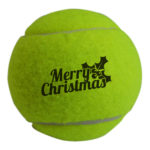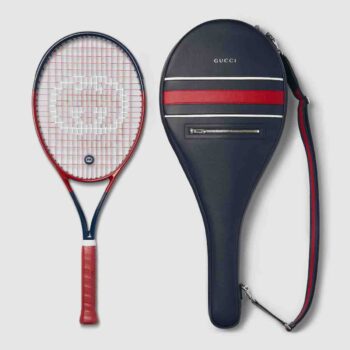There is a lot of lingo floating around tennis racquets. What is a polarized setup? What benefits does lead tape have? How important is swing weight etc? I will try my best to explain these concepts without becoming too technical.
For those of you who want to delve into this subject and other racquet tech topics in great depth, there are books such as “Technical Tennis”, the Tennis Warehouse University website and some really interesting videos on the topic from a guy called Racquet Tech. I will try not to go too deeply into detail and instead aim to simplify and make it useful to your own tennis games.
Let us start with swing weight. I wrote about it in “Do I need a heavy racquet to hit hard?”, but in general swing weight logically means how heavy the racquet is to swing. You can find out how to measure your swing weight with the TWU swing weight tool for example, and you will usually find it in the racquet spec listing when you browse and buy online.
How important is swing weight?
The swing weight is important since a racquet with a low static weight can still be heavy to swing, and if you like a high swing weight, you will usually end up adding weight to whatever racquet you play with. One of the “perks” of playing with the HEAD Liquidmetal Radical Tour is that I do not need to do any customization to end up with my preferred 330 swing weight.
So can you hit a heavy ball with a “light” racquet? Yes, with the right amount of swing speed and/or some velocity from the incoming ball you can hit a whopper of a shot. A heavier racquet means you have more mass “pancaking” on the ball, so that will help in some form. However, too much mass makes the racquet heavier to swing and will impact swing speed which will balance things out.
Your desired swing weight, balance and static weight is highly personal and there is no one trick pony. Some players can generate massive swing speeds and still hit the ball in the middle of the racquet – look at Kyrgios and Dolgopolov for example, while for example Wawrinka has a slower swing, but a beastly swing weight.
Do you want to increase the swing weight, but not sure how to do it? Where do you place it?
The best way is to add lead tape (I use Tourna lead tape
myself) to your racquet. I tend to like lead tape at 3 and 9 o’ clock with most racquets I use. What it does to my game? It gives me more plow-through for my semi-flat shots and more stability if I hit off-center. This is what I would call a de-polarized setup. When you add weight to the “poles” of the racquet, like in the handle and at 12 o’ clock to increase power, you get a polarized setup. A polarized setup gives more spin as it allows the racquet to move/vibrate more when you hit the ball. Both Nadal and Federer uses a polarized setup, Djokovic and Murray uses depolarized setups. It makes sense when you think about it – Djokovic and Murray needs massive stability, plays a solid and patient defense and returns whatever heavy ball you throw at them while Nadal and Federer holds their racquets loose and hits aggressively with lots of spin coming from their wrist movement.
The only way to find out what you like is to know your game and test various setups to see what works best for you. Remember, that means to also play against a variety of opponents, because getting the same pace and style ball will not really give you the proper test you want.
The balance of the racquet is of course another important factor in finding your setup. Classical racquets were traditionally heavy and flexible with a head light balance to make them easier to swing. Today’s racquets are lighter, stiffer and more evenly balanced to increase swing weight and get a faster yet not unstable performance. You can not miss out on speed and power in the modern game of tennis.
Modern tennis and its meaning
So what is the modern tennis? The expression “modern tennis” is used every so often on tennis nerd and in other related sources these days. What does it really mean?
Expressions are always in motion and never owned by anyone, but the way I have come to understand and use “modern tennis” is for the kind of high-speed top spin game that is played on the ATP and WTA Tours today. Balls move faster, bounce higher and players need to work a lot on their physique to be able to handle it without getting injured. The competition gets tougher every year and not being in great shape is simply not an option anymore.
These are a few terms I wanted to bring up in my racquet lingo post part 1. Are there some other things you think I should write about when it comes to tennis gear and the lingo involved? Let me know in the comments below!
















Great explanation, I’ve started delving into racquet tech with the help of your posts. I’ve just ordered some tungsten tape (instead of lead) as I’ve heard that lead can be toxic if handling then touch mouth, very minimal risk, anyway when adding weight to racquet at 3 and 9, do you add it to each side of strings. I see kimony do a H shaped tape to make it easier to do. Also at 12 do you add to either sides. When beginning to add weight how much do you add to begin with if trying out? 1 gram? At a time?
Thanks
Steve
Yeah, lead tape should not be used as candy! And you have to be careful with it.
Yes, you add it to each side of the strings to get even balance. At 12 you also do both sides of the strings.
I would start with a 1/4 strip of lead (1 gram) on each location – this will bump your racquet up 4 grams, if you add the same weight to the handle (either by lead tape, an extra over grip, a leather grip or thicker grip, blu tack or silicone in the butt cap etc) you will maintain the racquet’s balance as well.
Good luck! Cheers / Jonas
Thanks, keep up the good work
Steve
Great post.yet again.
Maby u could explane the stiffnes of a racquet is it ra? How much ra is a stiff racquet and a flexibel one.. also the thickness of the strings is somthing I wonder more about
Thanks tennisnerd.
Merrychristmas and new tennis year to you
Great idea, Alf. This will come in part 2 shortly. Merry Xmas and Happy Tennis Year to you too! Cheers / J